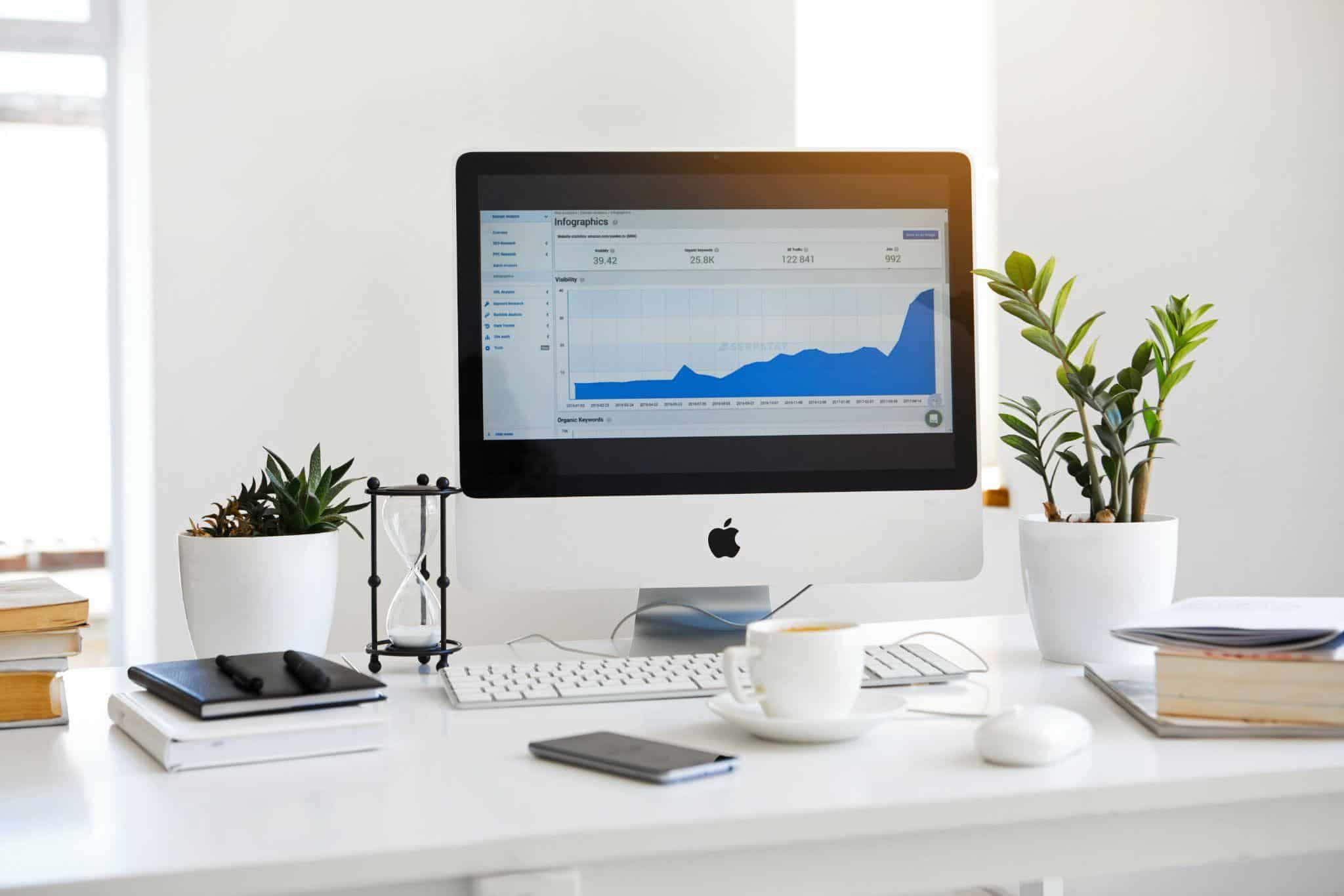Social media analytics are at the core of any successful digital marketing campaign, and savvy business owners know that studying metrics from across platforms is one secret to outshining competitors and achieving a desirable ROI. But how do you read social media analytics, and where can you find them?
How do I check my social media metrics?
Each social media channel has its own metric analysis tools found within your business account, such as:
Important note: Facebook Analytics, a longstanding Facebook tool, is now no longer available. Businesses wondering how to market on Facebook should turn to Business Suite, Ads Manager, and Events Manager to track performance. Learn more here.
You could look at each of your social platforms’ data analysis tools individually and try to find insights into each separate medium’s performance… but that would be leaving money on the table. The true power of using comprehensive social media analytics lies in understanding how certain KPIs can be used to enhance performance across all marketing channels. This allows you to use audience insights to create strategic content that improves your brand awareness and bottom line.
 Source: Pexels
Source: Pexels
What do social media analytics tell you?
The better question would be: what can’t they tell you? Use insights from Instagram, Facebook, Twitter, and similar channels to stay on track to meet marketing goals and identify key opportunities for growth across platforms. Social media analytics aren’t only about likes and popularity. They can tell you if you’re connecting with your target audience, how your performance compares to your competitors’, whether you’re nurturing a great user experience, and how your brand is perceived in your market.
Use key metrics to:
- Track and verify ROI. 61% of businesses admit that they aren’t always successful at tracking ROI from online content – but you don’t need to be one of them. Accurately measure money spent vs. money earned with analytics tools and tracking URLs known as UTMs to tell you how different campaigns contributed to your overall sales and conversions.
- Understand your audience. Use post insights to answer questions like: Am I successfully engaging with my target demographic? Do certain images, keywords, and mediums perform better with specific audience segments? How can I better connect with prospects and nurture leads?
- Create accurate benchmarks. Use competitor analysis to create the right benchmarks for success and keep your performance on track. Without a goal to work towards, metrics lose their meaning.
- Enhance customer service. Assess team members’ performance with community management analytics, and find opportunities to better meet your audience’s expectations when it comes to stellar customer service.
- Identify audience sentiment trends. Prevent being caught off guard by a change in perception towards your brand by monitoring audience sentiment. Are you still “clicking” with your target customers, or do you need to update the tone and themes of your marketing?
- Find the right influencers. Invest in the best influencers for your brand by analyzing public social media account data and choosing partners that have a high performance for your key topics and demographics.
As you can see, the above benefits don’t only apply to a singular social media platform. Gaining a better understanding of your audience, brand perception, and ad performance will help you develop a winning digital marketing strategy.
What should be in my social media analytics report?
Your analytics report should span every social media channel you use to ensure that you get a full picture of your performance. You’ll also want to translate data from your report into actionable, understandable results that will point you towards the right solutions for your unique challenges. Using a cross-platform analytics solution can help you create meaningful, comprehensive ad hoc reports – check out this post to learn more about social media analytics tools.
Keep in mind that every metric you analyze should have an associated goal. Goals and benchmarks are how you measure whether your social strategy is working; without them, you’ll just be looking at reports and asking, “So… what does that mean?”. For example, let’s say your goal is to generate leads. To evaluate whether your current lead-generating strategies are working, you may look at your subscriptions and audience growth rate since implementing the campaign in question, plus use competitor analysis to find relevant benchmarks.
Let’s take a look at how to use insights from Instagram, Facebook, Google, and more to build a metrics report, plus what they mean when it comes to creating a successful digital marketing and SEO strategy.
Engagement
Engagement includes some of the most well-known (but certainly not the only) hallmarks of a high-performing social media post: likes, shares, and comments. Wondering how to view engagement on social media? Create a report that includes likes, shares, comments, image clicks, video views, link clicks, and comment likes. By monitoring all this data over time, you can begin to spot trends and define what content your audience loves.
You can divide engagement into a few categories for better analysis:
- Average engagement rate (total number of likes/shares/comments ÷ # of followers). Compare this metric to your competitors – if you’re falling short, how does their content differ from yours? What gaps could you fill?
- Amplification rate (total post shares ÷ # of followers). How many users are you reaching with your posts? If one post has a much higher amplification rate than others, what made that content stand out?
- Virality rate (total shares ÷ total impressions). This metric looks at how many shares were associated with unique views of your post. Even if it has a lower number of likes, a post with a higher virality is a more effective post.

Source: Pexels
Something to keep in mind: Different platforms will inherently inspire different amounts of engagement (Instagram, for example, usually has higher engagement rates than Twitter or Facebook). This is why creating benchmarks based on public channel data and comparing rates across platforms is essential to analyze your content’s success accurately.
Audience growth rate
Measured by how quickly you gain subscriptions or followers, trends in your audience growth can be a good indicator of why people are “signing up” for your brand. If you notice an upward tick after a certain post or campaign on Twitter, replicate similar content on your other platforms to continue attracting subscriptions and growing faster than your competitors.
Keyword frequency
Use keyword analysis to identify which topics are trending with your target audience and appearing on social graphs for you and your competitors. Once you identify keyword opportunities, you can implement those keywords across channels to expand your reach.
Share of voice (SOV)
How visible is your brand in your market? Share of voice measures how often your brand is mentioned on social media compared to your competitors (this can even include visual mentions). This form of competitive analysis can go beyond just social media; expert marketers look at social media mentions and monitor search engine rankings, and keyword rankings to get a complete picture of a brand’s position in its market.

Conversion rate
Social media conversion refers to how often your audience took a desired action – whether that be a sign-up, a purchase, or a share – after interacting with your social content. This can seem tricky to track, but there are a few strategies you can use to get a good picture of what content converts and whether you’re supporting a positive ROI.
- Add a unique CTA to a post, use cookies to track campaign activity, and then calculate your conversion rate (conversions ÷ total clicks).
- Track the click-through rate (CTR) of any post with a CTA (total clicks ÷ total impressions).
- Analyze the bounce rate of your content by using Google Analytics.
Additionally, it will serve you well to incorporate your social media conversion data into your business’s overall marketing analysis. To find out what percentage of your conversions come from social media, simply divide your social media conversions by your total conversions.
As always, these metrics only mean something if you set accurate benchmarks by analyzing competitor data. A social media analytics tool will allow you to scan public channels for any relevant data and gather valuable information about your competitors’ performance.
Audience sentiment
Sentiment analysis tools included in social media analytics solutions are critical to gauging where your brand stands with your audience. This metric tracks online mentions and identifies certain language trends in comments or shares that signal positive or negative brand perceptions. Using these audience insights, you’ll be able to nip PR issues in the bud and create more content that your audience loves across all marketing channels.
Customer service performance
Never underestimate the importance of delivering outstanding customer service. With the sense of immediacy that comes from social media, this is an area where you can really dig into outshining competitors with excellent, fast service. Analyze what’s working and what’s not, and use that information to improve customer service across your entire organization.
For a deeper dive into how to measure and report each of these elements, check out this article from Hootsuite.
Social media analytics are a wealth of information on improving your marketing performance across digital platforms and beyond. Start using it to make better decisions across all your channels today!

